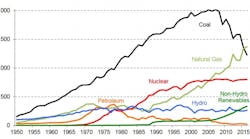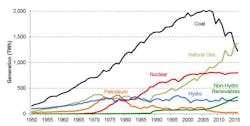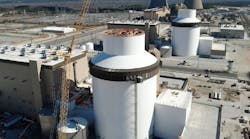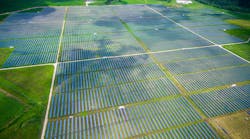The National Renewable Energy Laboratory outlook shows significant projected growth in natural gas and renewables through 2050. The growth will be driven by abundant, low-cost natural gas and renewable energy cost declines and performance improvements.
The outlook discusses four areas of recent and projected future change in the U.S. electricity sector: renewable energy cost declines and associated growth, abundance of low-cost natural gas and associated generation, rapid growth in distributed rooftop photovoltaics (PV), and power sector decarbonization. New to this year's report is the Standard Scenarios Scenario Viewer, which provides downloadable state-level capacity, generation, and other results for the scenarios included in the report.
Shale Gas Revolution
According to the report, the shale gas revolution has led to an abundance of low-cost natural gas and, with it, a dramatic increase in gas-fired generation. Similarly, renewable generation technologies have experienced large reductions in cost and improvements in performance which, coupled with renewable energy policies, have aided in increasing investment and generation from renewable energy capacity. These increases in generation from natural gas and renewables have precipitated a decline in coal generation to levels not seen since the 1980s. The resulting energy mix has driven down power sector carbon dioxide emissions such that 2015 emissions were 21% below 2005 levels.
Growth in Renewable Generation
Renewable energy technology costs, especially those for wind and solar photovoltaics (PV), have come down significantly over the past several years, and further reductions in costs and improvements in performance are expected. These declining costs coupled with policy support have led to increased deployment, with renewable sources (including hydropower) accounting for 14% of net U.S. generation in 2015. Given anticipated reductions in renewable energy technology costs and the extension of renewable generation tax credits, strong near-term growth in renewable generation is projected to continue . However, growth in renewable generation is projected to slow following the expiration of the production tax credit and the decrease in value of the investment tax credit in the early 2020s. In the longer term, renewable generation is projected to increase in market share, even under low-cost natural gas conditions. In 2050, renewable energy penetrations reach 33 %–59% of total generation, with the Mid-case Scenario reaching 44%.



